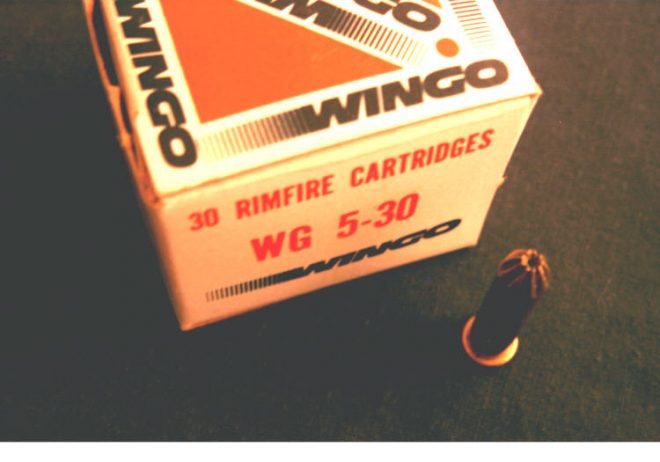
The story of the Wingo is quite fascinating and a little sad. I’m sure many of us would love to go back to San Diego in 1971, walk into the hottest new joint in town, grab a cocktail in the lounge, and then go shoot flying ice-balls out of the air with a rimfire shotgun. For those who were in San Diego in 1971, this was a reality at Winchester’s new entertainment location, Wingo!
Wingo was a venture by Winchester to create an entertainment business which combined wing-shooting with an indoor recreational environment, having not only the titular shooting sport “Wingo”, but also a cocktail lounge, snack bars, cafe and observation areas for the new sport. At the heart of this was an entirely new machine which created hollow ice-balls. These would be thrown toward the shooters from a system which was computer controlled, and even had inputs from the competitors. The thrower had five launch ports and the opponent could select which port, timing delay, and launch speed of the ice ball for the shooter. Shooting strings were 10 shots and the shooters were not only scored on their hits, but the speed with which they broke the target after it was launched. This meant that there was not only the skill of shooting involved, but also an element of strategy on the part of the opponent in selecting how the ball was launched.
The inaugural location was in San Diego at a 30,000 square foot building which had 18 Wingo shooting fields. It was anticipated that the new venue would be so successful that additional locations would soon be opened in other metropolitan locations, perhaps even franchised out all across the country. Unfortunately, this did not pan out, and the first and only Wingo location would close down within the year.
What remains, apart from the desire to build a time machine and go back to San Diego in 1971, are the actual guns used for the game of Wingo. Winchester customized British-made small-frame Martini rifles, likely from BSA, putting a ventilated rib on a smoothbore barrel chambered for a .20 caliber rimfire shotshell. Being a Winchester, the lever was given a proper, Winchester-style finger loop. One of the safety features, being meant for indoor shooting with the general public, was a solenoid-powered sear disconnect.
There is a wire coming out the front of the forend which delivered power to a solenoid which operates a disconnect lever. Once the launcher had thrown an ice ball, the solenoid would be activated and the gun could be fired. Without the solenoid activated, the gun cannot be fired. Rounding out the gun is a Weaver Qwik-Point red dot optic. Red dot sights may seem a little old-hat today, and the Quick-Point with its large light-gathering tube above the actual reticle display seems antiquated in the 21st Century, but when Wingo debuted it was bleeding-edge technology. The Qwik-Point was still in the prototype phase and was not yet available to the general public & never would be.